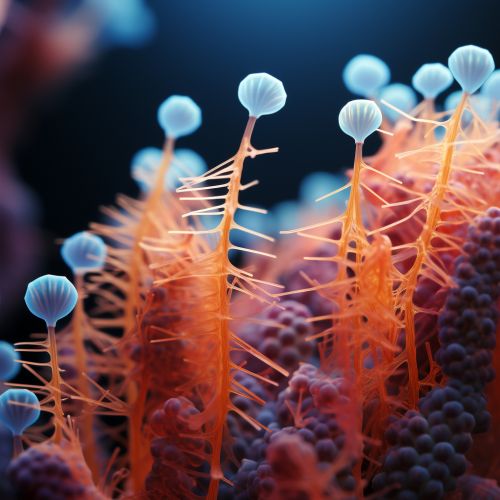Homeobox gene
Overview
Homeobox genes are a group of related genes that control the body plan of an embryo along the head-tail axis. This occurs through the encoding of a highly conserved family of transcription factors, known as homeodomain proteins. These proteins share a common structural motif, the homeodomain, which enables them to bind to DNA and regulate the expression of other genes.


Discovery
Homeobox genes were first discovered in the fruit fly (Drosophila melanogaster) during the 1980s. The pioneering work of geneticists Edward B. Lewis, Christiane Nüsslein-Volhard, and Eric F. Wieschaus led to the identification of these genes. Their discovery was a significant breakthrough in the field of developmental biology, as it provided a molecular explanation for the control of body segmentation during embryogenesis.
Structure
The defining feature of homeobox genes is the homeobox, a DNA sequence of approximately 180 base pairs. This sequence encodes the homeodomain, a protein domain that consists of around 60 amino acids. The homeodomain forms a helix-turn-helix structure, which is a common DNA-binding motif. This allows homeodomain proteins to bind to specific DNA sequences and regulate gene expression.
Function
Homeobox genes play a crucial role in the development of an organism. They are involved in the establishment of body axes, segmentation, and the differentiation of cells and tissues. By regulating the expression of other genes, homeobox genes control the formation of specific body structures at specific times during embryonic development.
Classification
Homeobox genes can be classified into several classes based on their sequence similarity and function. The two main classes are the HOX and the non-HOX genes. The HOX genes are further divided into 13 paralog groups, and are found in clusters on different chromosomes. The non-HOX genes include the PAX, SIX, and NKX gene families, among others.
Homeobox genes in Humans
In humans, there are four clusters of HOX genes, designated as HOXA, HOXB, HOXC, and HOXD. Each cluster contains 9-11 genes, and is located on a different chromosome. Mutations in these genes can lead to a variety of congenital disorders, such as Hand-foot-genital syndrome and Synpolydactyly.
Evolution
Homeobox genes are highly conserved across different species, indicating their fundamental role in development. The presence of similar homeobox genes in diverse organisms such as fruit flies and humans suggests that these genes were present in a common ancestor and have been preserved through evolution.
